Kingdom Plantae Family Annonaceae Species A. squamosa | Order Magnoliales | |
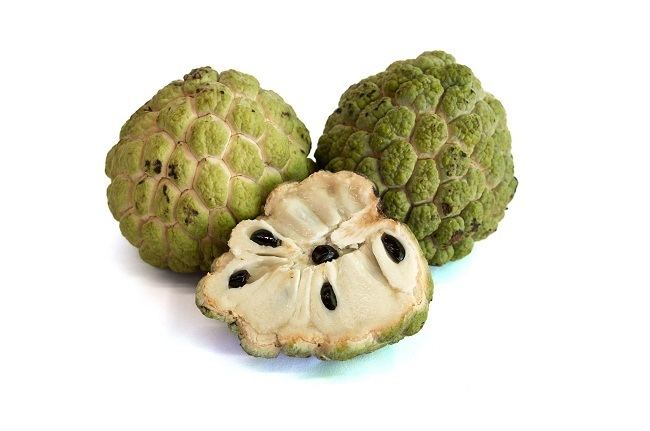 | ||
Similar | ||
Sugar-apple is the fruit of Annona squamosa, the most widely grown species of Annona and a native of the tropical Americas and West Indies. The Spanish traders and others brought it to Asia where its old Mexican name ate may still be found in Bengali ata, Nepalese aati, Sinhalese katu atha, Burmese awzar thee, and atis in the Philippines. It is also known as custard apple in India and (mainly Annona reticulata) in the Philippines.
Contents
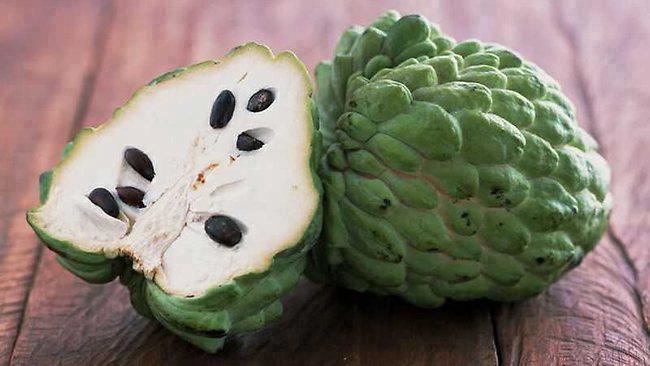
The fruit is spherical through conical, 5–10 cm (2.0–3.9 in) in diameter and 6–10 cm (2.4–3.9 in) long, and weighing 100–240 g (3.5–8.5 oz), with a thick rind composed of knobby segments. The color is typically pale green through blue-green, with a deep pink blush in certain varieties, and typically has a bloom. It is unique among Annona fruits in being segmented, and the segments tend to separate when ripe, exposing the interior.
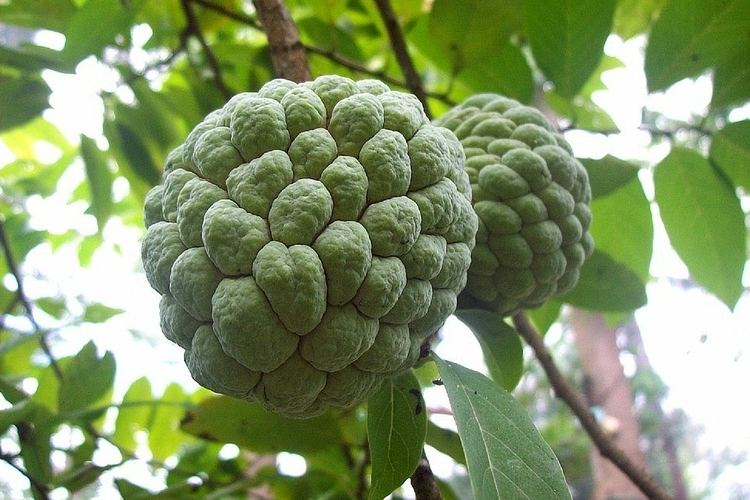
The flesh is fragrant and sweet, creamy white through light yellow, and resembles and tastes like custard. It is found adhering to 13-to-16-millimetre-long (0.51 to 0.63 in) seeds forming individual segments arranged in a single layer around a conical core. It is soft, slightly grainy, and slippery. The hard, shiny seeds may number 20–40 or more per fruit and have a brown to black coat, although varieties exist that are almost seedless.
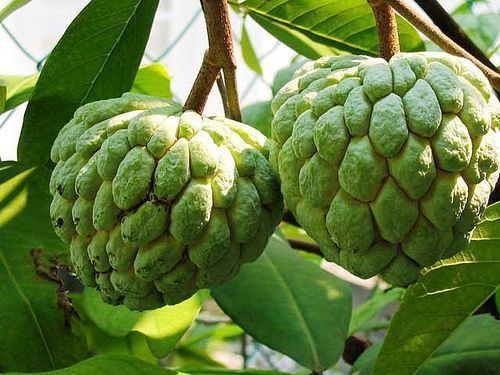
There are also new varieties being developed in Taiwan. The atemoya or "pineapple sugar-apple," a hybrid between the sugar-apple and the cherimoya, is popular in Taiwan, although it was first developed in the US in 1908. The fruit is similar in sweetness to the sugar-apple but has a very different taste. As its name suggests, it tastes like pineapple. The arrangement of seeds is in spaced rows, with the fruit's flesh filling most of the fruit and making grooves for the seeds, instead of the flesh's occurring only around seeds.

Nomenclature
As a result of its widespread cultivation, many local names have developed for the fruit.

In Bengali: ata (আতা)
In Gujarati: sitaphal (સીતાફળ)
In Hindi: sitaphal (सीताफल) or sharifa (शरीफ़ा)
In Kannada: sitaphala (ಸೀತಾಫಲ)
In Malayalam: aathakka (ആത്തക്ക) / seethappazham (സീതപ്പഴം)
In Marathi: sitaphal (सीताफळ)
In Punjabi: sharifa (ਸ਼ਰੀਫਾ)
In Tamil: sitappalam (சீதாப்பழம்)
In Telugu: sita phalamu (సీతా ఫలము).
Nutrition and uses
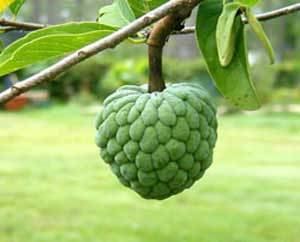
Sugar-apple is high in energy, an excellent source of vitamin C and manganese, a good source of thiamine and vitamin B6, and provides vitamin B2, B3 B5, B9, iron, magnesium, phosphorus and potassium in fair quantities.
A Philippine company produces sugar apple wine.
For uses of other fruit from the Custard-apple family see:

